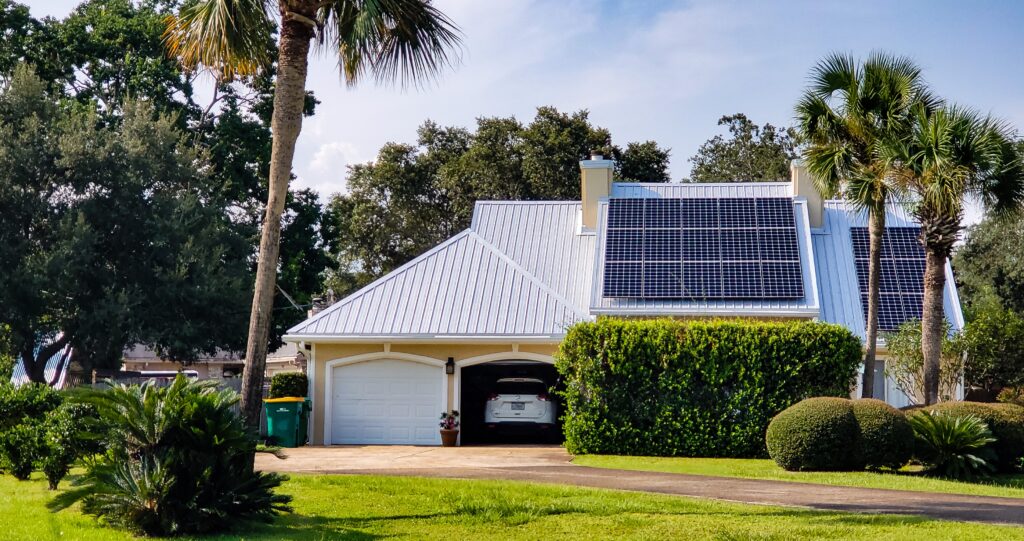Home battery storage is becoming an essential part of modern living. As we face rising energy demands, combining battery storage with solar systems offers a path to energy independence. Homeowners can reduce their reliance on the grid and embrace residential sustainable practices. In this article, we’ll explore how these systems work together and the benefits they provide. We’ll also look at popular technologies, installation costs, and tips for choosing the right system for your needs. Join us in discovering how home battery storage solutions can transform your energy use and contribute to a more eco-friendly world.
Understanding Home Battery Storage Systems
Home battery storage systems store energy produced by solar panels for later use. These systems offer a reliable power source even when the sun isn’t shining, ensuring your home remains powered. With the right system, you can cut down on utility bills and increase your home’s energy efficiency.
Table of Contents
- How Home Battery Storage Works
- Benefits of Combining with Solar
- Top Technologies and Brands
- Installation Costs and Savings
- Tax Incentives and Rebates
- Battery Lifespan and Maintenance
- Choosing the Right System
- Smart Energy Management Integration
- Innovations in Home Energy Storage
- Future of Sustainable Living
How Home Battery Storage Works
Home battery storage systems are critical for maximizing the benefits of solar energy. They work by storing excess solar power generated during the day, which you can then use during the night or on cloudy days. This stored energy helps you rely less on the grid and enjoy more stable energy costs. For further reading, the U.S. Department of Energy offers insights on energy storage.
At the heart of these systems are lithium-ion batteries, similar to those found in smartphones but on a much larger scale. These batteries have become popular because of their high efficiency and relatively long lifespan. By utilizing the solar power stored in these batteries, you can cover a significant portion of your home’s energy needs.
Benefits of Combining with Solar
Pairing home battery storage with solar panels provides households with multiple advantages. Firstly, it increases the autonomy of your home’s energy system. By storing the energy your solar panels generate, you can maximize their efficiency, ensuring no energy goes to waste.
Moreover, this combination offers financial benefits. You may see a reduction in your electricity bills because of lower reliance on the grid, especially during peak hours when electricity costs are highest. Combining battery storage with solar systems can also help you gain energy independence, protecting you from price hikes in the energy market.
Environmental Impact
Combining solar panels with home battery storage not only benefits your finances but also supports the environment. By using more renewable energy, you’re contributing to a significant reduction in carbon emissions. Every bit of energy stored in your home is energy saved from fossil fuel power plants, promoting a greener planet.
Top Technologies and Brands
When it comes to home battery storage, several technologies and brands stand out. Notably, lithium-ion technology has led the way due to its high efficiency, long lifespan, and decreasing costs. Here are some of the leading brands to consider:
- Tesla Powerwall – Known for its sleek design and integrated features.
- LG Chem – Offers reliable and scalable energy storage solutions.
- Sonnen – Provides eco-friendly options with innovative energy management.
These brands focus on quality and performance, making them top choices for homeowners looking to optimize their solar energy systems. Exploring these options can lead to a more informed decision tailored to your specific needs.

Installation Costs and Savings
The cost of installing a home battery storage system can vary significantly depending on the size and brand of the battery, as well as labor costs. On average, you might expect to pay around $10,000 to $15,000 for a full installation. While the initial investment may seem steep, the savings over time can make it a worthwhile investment.
Many homeowners experience up to a 40% reduction in electricity bills. Additionally, pairing your system with available tax incentives and rebates can significantly offset the initial costs, leading to even greater savings.
Tax Incentives and Rebates
Financing a home battery storage system becomes more accessible with various financial stimuli. The federal government offers the Investment Tax Credit (ITC), which reduces the cost of solar and battery system installations. Under current regulations, homeowners can deduct up to 26% of the installation cost from their federal taxes.
Some states provide additional rebates, making storage options like these more affordable. Investigating and leveraging these incentives can considerably reduce the upfront costs, easing the transition to more sustainable energy solutions.

Battery Lifespan and Maintenance
The lifespan of a home battery storage system is an essential factor to consider. Most lithium-ion batteries come with a lifespan of between 10 to 15 years, depending on usage and care. Proper maintenance is crucial for ensuring your system lasts.
Maintenance Tips
Regularly checking for any signs of wear and tear can prevent unexpected issues. Here are key maintenance tips to follow:
- Ensure batteries are installed in a cool, dry place to prevent overheating. Avoid areas with direct sunlight or high humidity.
- Perform routine software updates to improve performance and efficiency. These updates can sometimes be overlooked but are critical.
- Schedule regular inspections from a qualified technician to ensure the system runs smoothly. This is especially important after extreme weather conditions.
By following these practices, you can prolong your battery’s life, ensuring continued energy savings and efficiency. A well-maintained system not only lasts longer but also performs more reliably, giving you peace of mind.
Choosing the Right System
Selecting the right home battery storage system can seem daunting, but it doesn’t have to be. Start by assessing your home’s energy needs and understanding your goals. Do you primarily want to reduce bills or achieve complete energy independence?
Consider the system’s compatibility with your existing solar setup. Factors such as capacity, power rating, and connectivity options can influence your decision. Consulting with an expert is a smart step to ensure you choose a system that matches your specific needs and household requirements.
Additionally, explore customer reviews and case studies to gain insights into the experiences of other homeowners. Understanding common challenges and solutions can guide your decision-making.
Smart Energy Management Integration
Integrating smart energy management tools with your battery system can significantly enhance its performance. These tools allow homeowners to monitor energy use, adjust settings, and optimize power consumption.
Utilizing energy management apps gives you real-time insights into how much stored power you’re using. By doing this, you’ll have greater control over your energy consumption patterns and can make informed choices to reduce waste.
Some advanced systems even offer predictive analytics, which can help you anticipate your energy needs based on historical data. This proactive approach enables smarter energy use and aligns perfectly with sustainable living goals.
Innovations in Home Energy Storage
The home energy storage industry continues to evolve with cutting-edge technologies. Advances in battery chemistry are increasing efficiency, making systems more affordable and accessible for homeowners worldwide. Solid-state batteries and energy blockchain technology represent future possibilities that promise to revolutionize energy storage.
Researchers are also exploring the use of alternative materials for battery production, aiming to create more environmentally friendly options. These innovations could lower the ecological impact of battery manufacturing, creating a truly sustainable cycle. To understand the impact on emissions, visit the EPA’s Greenhouse Gas Emissions page.
The continuous development of these technologies opens up opportunities for even greater independence from traditional energy sources. Keeping an eye on these trends will allow you to upgrade your system when the time is right, ensuring you remain at the forefront of the energy revolution.
Future of Sustainable Living
The future of sustainable living will be significantly shaped by home battery storage systems. These solutions are key to reducing the carbon footprint and promoting renewable energy use in homes. Educating yourself about the benefits and opportunities of energy storage will empower you to be part of a cleaner future.
Environmental experts predict that home energy storage will become a standard feature in new constructions, integrating seamlessly with smart home technologies. As more people adopt these systems, community-level energy sharing could become a reality, optimizing energy use across neighborhoods.
Investing in home battery storage means investing in a sustainable tomorrow. It’s a vital step in a broader movement towards environmental responsibility where every household can contribute. Governments and businesses pushing for more sustainable energy solutions make adopting these technologies not just a personal choice but a global necessity. Together, we can transition to a greener, more sustainable world, where energy is used efficiently, and resources are conserved for future generations.
John B is the head electrician at Specialty Electric, where he brings over 15 years of dedicated experience to every project he handles. Known for his technical expertise and meticulous attention to detail, John specializes in high-end electrical installations and advanced troubleshooting. His commitment to safety, efficiency, and the latest industry standards makes him a trusted name among clients seeking reliable and innovative electrical solutions.


